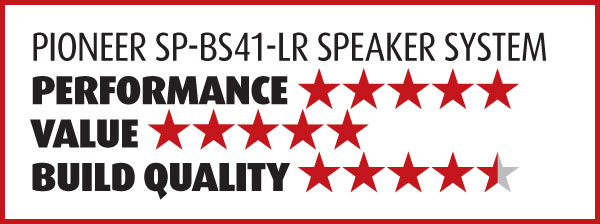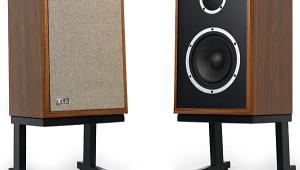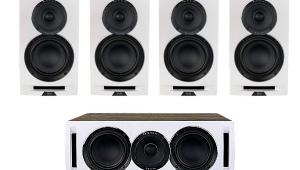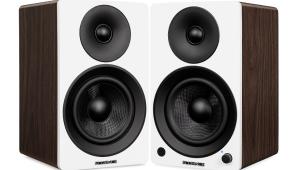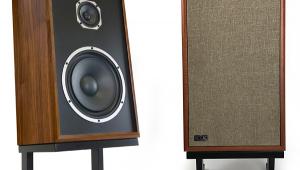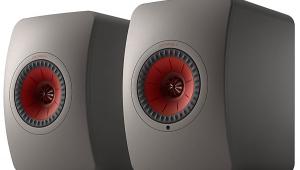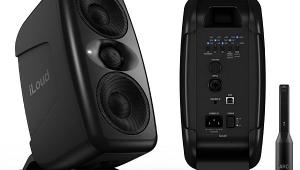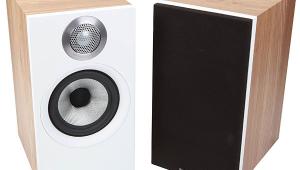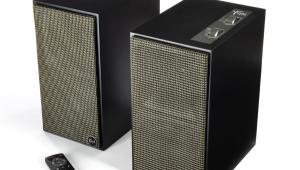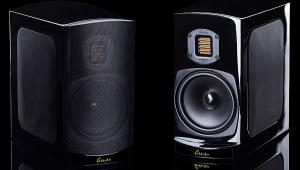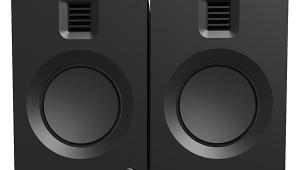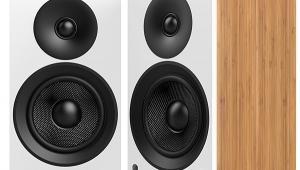Pioneer SP-BS41-LR Speaker System Page 2
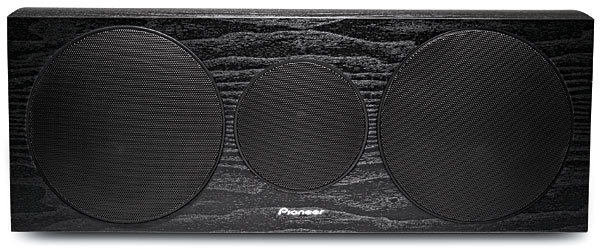
The SW-8 subwoofer is the runt of the litter, more than an inch shorter than the monitor. Its 8-inch down-firing woofer has a paper cone with a polypropylene dust cap and rubber surround. “The diameter of the inverted dust cap is almost as large as the cone, so it adds considerable strength and damping to the cone,” notes the manufacturer. The port is on the front. Amplification is a modest 50 watts RMS.

Associated equipment included a Rotel RSX-1550 A/V receiver and OPPO BDP-83SE universal disc player. All movie demos were Blu-ray Discs with DTS-HD Master Audio soundtracks. In a rare trifecta, all music demos were in high-resolution formats: two SACDs, one DVD-Audio.
The Devil Is a Better Entertainer
M. Night Shyamalan’s Devil was by far the highlight of my movie sessions. Characters are trapped in an elevator; which one is the devil? The score waxes aggressive from the opening moments, signifying the devil’s entrance with sawing basses of doom and snarling trombones of evil before the first words of dialogue are spoken. Not only did the strings and brass have more inner detail than typical soundstage-recorded fare—they were gritty, astringent, visceral, and thrilling. The center lived up to the high standard that the monitors established. Even something as prosaic as two people talking quietly over coffee sounded highly realistic, with a softly vibrating purr embellishing the low voices. Elevator dialogue
was of course recorded with a truncated but discernible decay. The high resolution that supports all of the above was accompanied by a high degree of listening comfort. Volume was a set-and-forget affair.
Predictably, lesser material produced lesser results. Wall Street: Money Never Sleeps is as compelling as you’d hope a great movie’s sequel to be. But the David Byrne and Brian Eno songs that dominate the soundtrack didn’t lift free of the dialogue and ambient effects. The only moment that popped was a brief scene featuring a pianist surrounded by standing listeners. This isn’t a bad soundtrack; it merely isn’t a great one. To their credit, the Pioneers were revealing enough to tell me the difference.

Ditto for my audition of Jonah Hex. I won’t deny that the movie has its moments. Any film starring Josh Brolin and John Malkovich can’t be all bad. But it didn’t give the Pioneers much to work with. My notebook commented: “No highs, no lows, must be a movie based on a comic book.” Voices and music had no bottom end, drums were castrated, and explosives were muted. I don’t blame either the speakers or the sub for this, as I heard a modicum of bass effects during the previous two movies, especially the first. Here again, the Pioneers provided an unforgiving window to the source material, a mark of their neutrality.
Fantastic Fantastique
Orchestral music in a highresolution format often tells me a lot about how a product sounds in a short time. The Berlioz Symphonie Fantastique that slid into the OPPO was a 10-year-old Telarc SACD with Paavo Järvi conducting the Cincinnati Symphony Orchestra. In retrospect, it is now apparent that the Telarc SACD era was a golden age—the high-resolution surround equivalent of RCA Living Stereo LPs. The Telarc sound—smooth midrange and welldeveloped but not hyperreal highs—filled the front of the room, with just a little surround fullness in the back. The sub depicted lower strings and percussion with minimal brushstrokes, but it did it deftly, without calling attention to the speaker/sub crossover. The Pioneer EX speakers I reviewed a few years back would have offered an extra degree of transparency, but these newer Andrew Jones speakers got the overall balance and feel right.
Sweeter Than the Day, also on SACD, turned me into a Wayne Horvitz fan. His approach to piano is Satie-meets-Monk, a kind of Europeanized jazz. This quartet with guitarist Timothy Young, string bassist Keith Lowe, and drummer Andy Roth makes the most of his sombre, reflective melodies and sophisticated yet accessible harmonic palette. The mix is 5.1 informed but not hobbled by a two-channel aesthetic. It keeps the piano and guitar in the front left and right channels, with a shimmer of cymbal in the middle and a spectral presence in the surrounds. The piano sound was as natural and balanced as I’ve ever heard from any combination of content and loudspeaker. When the band offered texture treats—Young’s 12-string electric guitar on “Julian’s Ballad,” Horvitz’s prepared piano on “George’s Solo”—the high-resolution treatment became mesmerizing.
Seal IV is a rare jewel in a tin setting, which is perhaps inevitable for a mainstream pop artist. This DVD-Audio version, one of several in Seal’s catalog, was less interesting for the high-resolution aspect (which in this case was too subtle for my ears) than for the use of surround. Seal’s voice is the rare jewel I referred to, and this album takes more than one approach to mixing it in 5.1. Some tracks limit the voice to the front left and right channels—and the monitors rose to the challenge. Other tracks put an unvarnished Seal in the center channel, with a slightly reverb-sweetened version of that distinctively husky voice in front left and right and just a faint suggestion of it in the surrounds. Here the center shone, distinguishing the vibrant voice from the instrumental muck with which producer Trevor Horn surrounded it. The better the mix, the more the speakers responded to the unique beauty of Seal.

Let’s set aside the shopworn “champagne performance on a beer budget” cliché and conclude with facts, reasonable inferences, and defensible judgments. First of all, Pioneer did well in picking Andrew Jones as its speaker-designing partner. He’s got great ears. For these products, the man and the company have somehow managed to get hold of highquality parts and relatively intricate manufacturing processes at low cost. While this modestly priced Pioneer SP-BS41-LR speaker system hasn’t altogether abolished the immutable truth of price-to-performance ratio, it has bent, massaged, and finessed it to the extent humanly possible. These speakers are well-rounded performers that are easy to listen to and, with the right content, deeply involving. It goes without saying that they’re as good for music as for movies. They amazed me. If you want great sound for as little money as possible, this is the hottest ticket in town.
